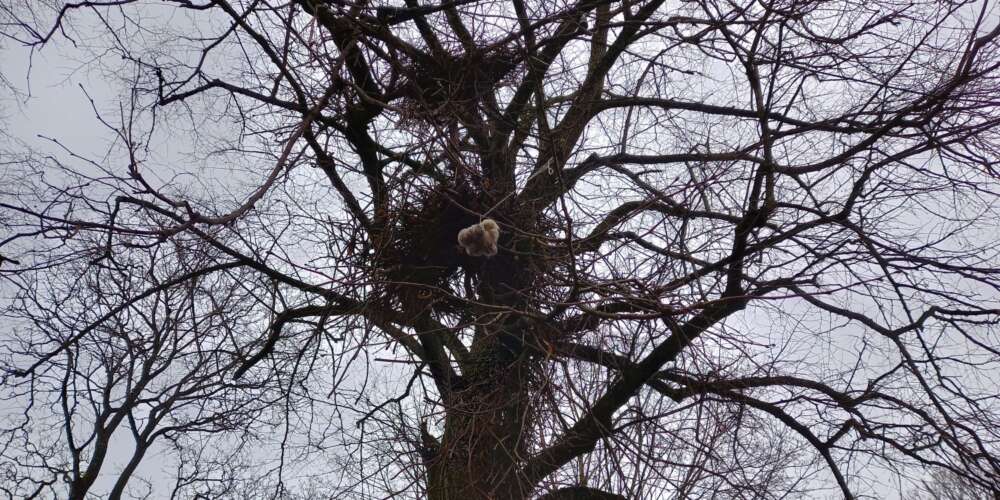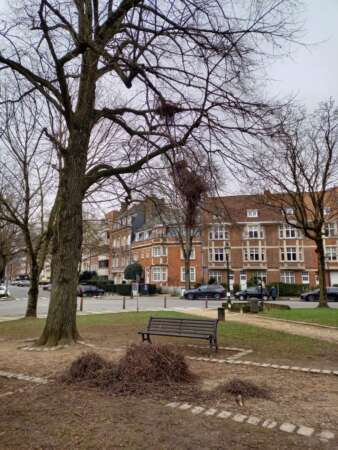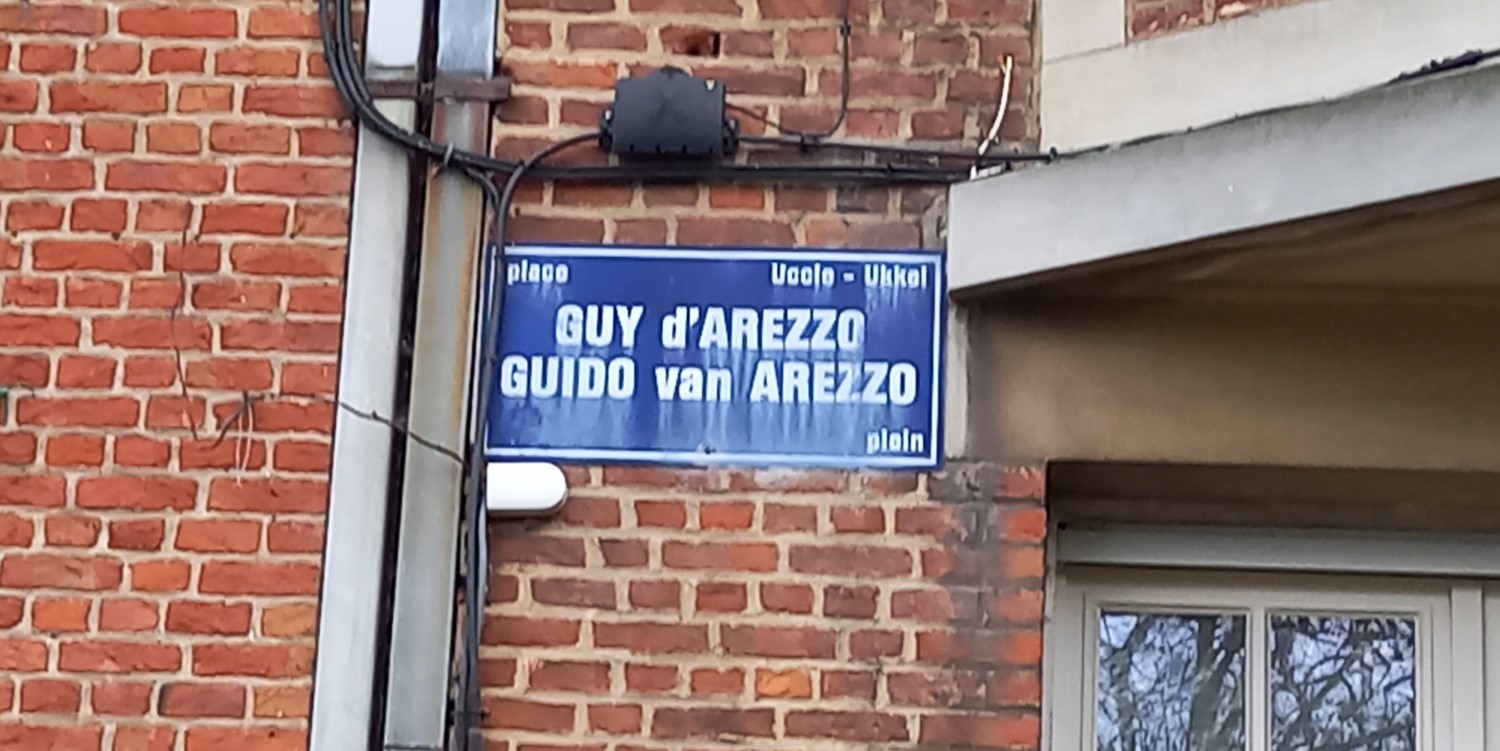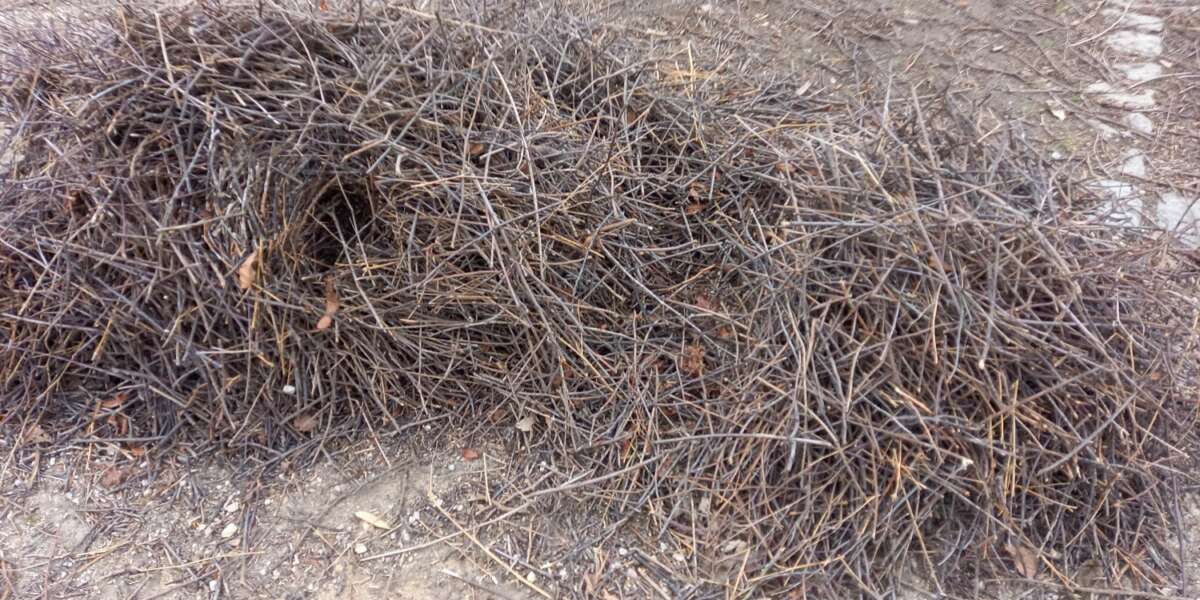
Did the trees on place d’Arezzo need a thorough pruning, is it vandalism or the extermination of a bird because of the damage it causes? The decades-old monk parakeet nest on place Guy d’Arezzo in B1180 Uccle/Ukkel BE no longer exists. In the tree itself there are still some kindling wood and on the ground underneath there is a larger pile of branches. Anyone who enters that zone via the Tenbosch park is also warned as soon as they walk through the gate. The plaque with a sketch of the bird and its name Myiopsitta monachus has disappeared.

Monk parakeets, also known as Quaker parrots, are renowned for their unique nesting behaviors, constructing large and communal nests out of sticks and branches. However, this architectural ingenuity often comes at a price. The sheer size and weight of their nests can cause significant stress on trees, leading to potential damage or even the collapse of branches. Additionally, these birds are considered invasive in many regions, leading to efforts to control their populations to protect native flora and fauna.
In the case of the nest on place Guy d’Arezzo, it is likely that the local authorities deemed the nest a threat to the health of the tree and public safety. The removal might have been a preventive measure to avoid future damage or accidents. The disappearance of the plaque could be an indication of the efforts to remove any trace of the birds to discourage their return.
Brabant, known for its classified often quite old trees, likely takes pride in preserving these natural landmarks. The presence of invasive species such as the monk parakeet could be seen as a threat to these cherished trees, prompting actions to protect them.

At place d’Arezzo, the damage caused by the monk parakeet’s nest likely included broken branches and potential weakening of the tree structure. The birds’ constant addition of materials to their nests can cause significant stress on trees, especially when the nests are situated high up, where the branches are thinner and more susceptible to breaking under the weight.
Moreover, the fallen branches and kindling wood scattered around the base of the tree posed a hazard to pedestrians and park visitors. Such debris can lead to trip-and-fall accidents, and the accumulation of organic material can also attract pests and create an unsightly environment. The damage to the tree itself might have prompted the authorities to take action, ensuring the safety and aesthetics of the park.

Group of monk parakeet (myiopsitta monachus), or quaker parrot, in a public park in Buenos Aires
In cases where nests of monk parakeets are destroyed, the birds themselves typically seek out new locations to build their nests and find shelter. Monk parakeets are highly adaptable and resilient, known for their ability to quickly construct new nests in suitable environments.
The destruction of their nest at place Guy d’Arezzo might force them to temporarily relocate. Monk parakeets are social birds and usually live in colonies, so they are likely to seek out new trees or structures in the vicinity where they can rebuild their communal nests.
While the removal of their nest addresses immediate concerns about damage and safety, it doesn’t necessarily mean the birds will leave the area permanently. They’ll likely find another spot to winter and continue their daily activities. This adaptability can make managing their populations challenging, especially in urban settings.
The decision to remove the monk parakeet’s nest from place Guy d’Arezzo is a complex one, balancing the charming presence and architectural talents of the birds against the potential damage and safety concerns they pose. While the birds’ nests are marvels of avian engineering, their impact on urban trees and infrastructure cannot be ignored.
The removal of the nest, and possibly the birds, highlights the ongoing struggle between preserving wildlife and maintaining public safety and urban aesthetics. It raises questions about how best to manage invasive species and protect native ecosystems while appreciating the unique behaviors of these resilient and resourceful birds.
Ultimately, while the monk parakeet’s destructiveness may have outweighed its charms in this case, it serves as a reminder of the delicate balance between human development and the natural world.

[Bird-watching: Monk parakeets in Brussels develop ‘unique’ call]
This article provides insights into the unique behaviors of monk parakeets in Brussels and their impact on the local environment.
[Brussels parakeet population out of control]
This article discusses the challenges faced by the Brussels-Capital Region in managing the growing population of parakeets and the measures taken to control their numbers, including the destruction of nesting sites. (With photo of ring-necked parakeet)
[The measures being taken to boost Brussels’ rich plant and wildlife]
This article highlights various conservation efforts in Brussels, including measures to protect native species and manage invasive species like the monk parakeet.